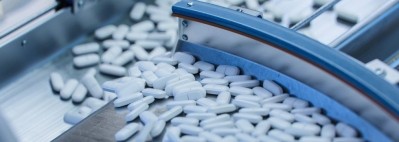Promotional Features
Low Environmental Impact Glucosamine for High-Impact Health
As the world re-activates and people are on the move again, they are seeking effective and sustainable supplements to help them power forth. GlucosaGreen® is the perfect solution.
Immune health has moved to the top of the natural health supplement list, as would be expected during a pandemic.
Now, as the world reopens, renewed athletics and fitness programs have become prioritised, bringing along a regenerated demand for mobility-support supplements, such as glucosamine for joint health.
However, not just any conventional glucosamine will fit consumers’ escalating demand for proof of sustainability and the environmental impact of the raw material manufacturing.
This is more the case throughout Europe than in North America. For example, according to Trust Transparency Center ITC Insights’ Consumer Survey 2020, European users of glucosamine are more aware of how glucosamine is sourced than US consumers, with German users significantly more informed.
In fact, according to the report, sustainability is much more important to glucosamine users than regular supplement users in general. Half of those surveyed (US, UK and Germany) stated that sustainability concerns will “often”, “frequently”, or “always” influence purchasing decisions. Among German consumers, this number is 66%.
If there is one (of many) lesson being learned in this new age it is that the concept of sustainability is no longer an option but an imperative.
Conventional glucosamine production using shellfish is rather harsh on the environment, and the shells used as raw materials are more susceptible to supply and demand issues.
The process of extracting the glucosamine from the shellfish innately contains several key disadvantages and deep-rooted insufficiencies, even in robust times. Compared to glucosamine obtained from shellfish, GlucosaGreen fulfils vegan and vegetarian needs, as well as leaves dramatically reduced waste from production: GlucosaGreen produces only 2 per cent of the waste compared to shellfish glucosamine.
GlucosaGreen is sustainable also because it is not dependent on a fragmented supply of crustacean shells. Shellfish are also used as a starting material for other products, which further stresses and thins the supply.
GlucosaGreen only needs glucose as a starting material, which undergoes an efficient patented fermentation process. Glucose is widely available and is easily sourced (via non-GMO corn), even in difficult times. Fermentation is a simple process that has a minimal environmental impact.
For example, to produce 1 metric tonne of glucosamine HCL, the conventional supplier would need 2,000 kg of chitin, 5,000 kg of sodium hydroxide (also known as lye), and 17,000 kg of 30% HCI. The shellfish undergoes alkali leaching with 5% lye, alkali cooking with 10 per cent lye, acid leaching with 3 per cent HCL, oxidisation, deoxidisation, then drying, resulting in chitin, from which the glucosamine is then derived. During this process of obtaining the chitin from the shellfish, up to 460 metric tonnes of wastewater is generated. It is energy intensive, inefficient, harmful to the planet and most critically, will not be sustainable for decades. And time will soon be running out.
To put this process in more stark terms, this extraction of chitin from shellfish necessitates the use of 1.4 billion litres of water to meet the glucosamine demand in Europe. This process also produces 16,500 metric tonnes of solid waste per year.
Compare these numbers with that of GlucosaGreen® glucosamine: the fermentation process to make GlucosaGreen that replaces the extraction of chitin from shellfish reduces water use by 99.6 per cent and the solid waste production by 98 per cent.
GlucosaGreen is manufactured via a patent-protected process that uses a unique fermentation technology on non-GMO corn to produce glucosamine bioequivalent to shellfish glucosamine. And this process is much more suitable to the well-being of the environment.
GlucosaGreen is available in several salt forms (eg, glucosamine sulphate, glucosamine hydrochloride, and n-acetyl-d-glucosamine) to meet a range of finished product requirements; it is also offered in several formats such as powders with an array of particle sizes, and exclusive DC (direct compression) granules for superior-quality tablets.
TSI Inc. is one of the global leaders in glucosamine and chondroitin supply, and has pioneered the true “green” glucosamine for the rapidly growing market of consumers who demand a non-shellfish source, and a source that does no harm to the environment.
It’s a new era for natural health all over the world, especially in Europe, as the population is focused on thriving while protecting the world’s resources for future generations. GlucosaGreen jointly fulfils both goals.




